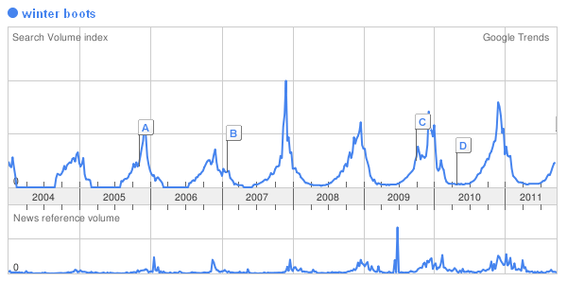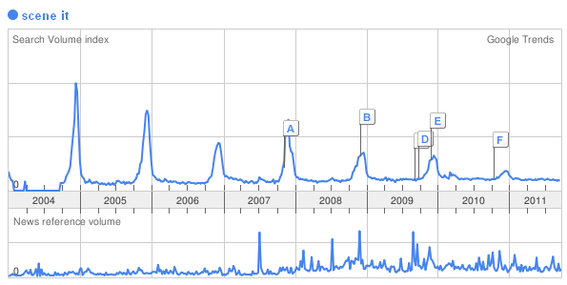The holidays are coming. For many online merchants, this means dramatically increased revenue and conversion rates. Start ramping up for holiday pay-per-click advertising now to maximize profits and build momentum for 2012.
Here are six tips that should be part of your holiday PPC ramp-up.
1. Focus on Top Ads in Google AdWords
In July I wrote “For Google AdWords, It Pays to be on Top,” my take on Google’s new “top vs. side” segmentation report, which quantified the impact of bidding your PPC ads to the top of the page. According to the data I reviewed in that article, PPC ads garnered up to 25 times the click-through rate and a much higher conversion when they appeared at the top of the page, versus at the side.
In preparation for the holidays, identify both top-performing and high-potential keywords and use analytics and conversion testing to maximize conversion rates for their target landing pages. The better your conversion rate, the more you can afford to bid per click. Consider an aggressive bidding strategy that leverages your high-converting keywords and landing pages to push your ads to the top, maximizing traffic, revenue, and profits.
Since my article in July, Google has released a new metric to help bid ads to the top of the page. The “estimated top page bid” metric provides insight into how aggressively to scale bids for a top-of-page placement.
2. A/B Test PPC Ad Copy
Test your ad copy to find the recipe that maximizes your click-through rate without compromising your conversion rate. All things equal, the higher your click-through rate relative to your competitors, the less you’ll have to pay per click while securing the same or better position.
A PPC approach that leverages A/B split testing can increase traffic and sales throughout the year, but the benefit improves during the holiday season as online sales skyrocket.
To split test not just your ad copy but also your keywords, bids, ad groups, ads, and placements, check out Google’s AdWords Campaign Experiments (“ACE”), “a tool that allows you to accurately test and measure changes to your keywords, bids, ad groups, ads, placements and more.” Google recently released version 9.5 of its AdWords editor, which now includes support for ACE.
3. Build a Promotional Calendar
Every fourth quarter, Michael Ober with Yahoo! Small Business crunches data and tweets a link to a calendar identifying the days he predicts will account for the highest online retail revenue sales. Consider doing your own while you wait for Ober to post his analysis. Review your holiday revenue from 2010, and attempt to predict which days will be your biggest and smallest.
Once you’ve prepared your calendar, map special promotions accordingly. For example, on slower days you might consider aggressive price discounts. Coordinate PPC ads, website messaging, and email campaigns. On bigger days, experiment with “gift-with-sale” promotions. Test offers at different times, and use the data to optimize future promotions.
Here are some important 2011 holiday dates to remember:
- November 25: Black Friday,
- November 28: Cyber Monday,
- December 11 and 12: Possibly the biggest shopping days of the year,
- December 19: Last-minute shopping day.
A promotional calendar helps ensure campaigns are coordinated, resulting in higher conversion rates.
4. Create Email Campaign Triggers Now
Don’t wait until 2012 to use email marketing to generate repeat sales. Start immediately. Email “triggers” — sent automatically based on a “triggered” event, such as a sale — can be a great way to quickly increase sales, as revenue from existing customers is often the most profitable. Email triggers come in many forms, such as a campaign that promotes a special offer to customers immediately after their first purchase. Create and optimize triggers now. You’ll have a sales machine that can multiply your spend on PPC marketing.
5. Play the Trends
Google Trends is an excellent resource for identifying seasonal products that your PPC campaigns should focus on. For example, take the term “winter boots.” According to Google Trends, search demand for this phrase increases reliably in the fourth quarter of every year. Build campaigns for hot seasonal terms like this early to optimize click-through rates and quality scores. By focusing on hot terms now, you can gain a competitive advantage.

Searches for “winter boots” greatly increase during the holiday, as do other seasonal products.
Google Trends can also identify hot new products. Take the board game “Scene It,” for example. Years ago a client noticed that its PPC campaign for that phrase was performing well, even though it was not funded with a big budget. A quick Google Trends search confirmed that the product was indeed surging in demand, and as a result, we learned that many stores had already sold out of this item. Our client quickly placed an order for thousands of additional units. This one product made for a successful holiday season.

Searches for “Scene It” increased dramatically in late 2004, indicating consumer demand for that new product.
6. Emergency Procedures
Plan for the unexpected. A rapid increase in holiday traffic stresses web servers. Protect yourself from wasting ad dollars from a site outage by having a clear PPC policy if your site goes down or experiences a major failure.





